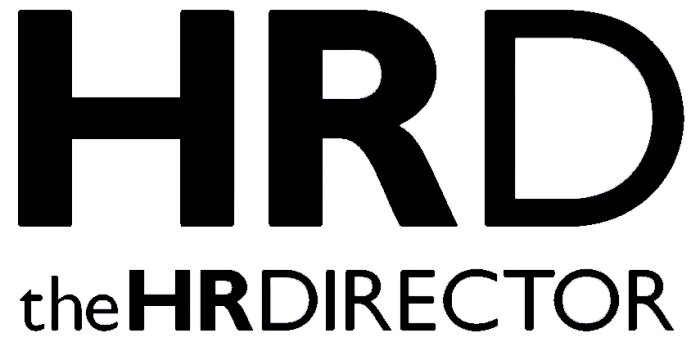What worked for yesterday’s workforce is driving today’s top talent straight to your competitors. Modern employees don’t want perks they’ll never use. They want benefits that feel personal, flexible, and real, and they expect them to evolve as fast as life does. As HR leaders, the question is no longer whether to redesign your benefits strategy but how to do it intelligently, sustainably, and with measurable ROI. But first, let’s ground this in reality: What does a one-size-fits-all approach really cost you?
When a Promised Promotion Turns Into a Pink Slip
I know better than most what happens when companies get benefits, support, and people care wrong. I was a high-performing leader returning from maternity leave, baby in arms, and I’d been promised a promotion and couldn’t wait to return. So, I travelled 350 miles on a keeping-in-touch day, baby in my arms, expecting to reconnect with my peers.
Instead, I was told I was being made redundant, just like that. After months of doing a handover to earn my new role, I was now redundant, pink pencils and all.
I was devastated. But I did what I always do: I leaned into my relationships. I went for coffee. I called people I’d helped over the years. By the end of that same day, I had four job offers, three recommendations for promotions, and I walked straight into my dream role, right after maternity leave.
For many, this would have been the end of the story. But I did what I always do: I leaned into my relationships. I went for coffee. I called people I’d helped over the years. By the end of that same day, I had four job offers, three recommendations for promotions, and I walked straight into my dream role, right after maternity leave.
My story is a stark reminder: When companies fail to support people through real-life moments, they don’t just fail their employees, they lose them altogether.
Why Generic Benefits Are Failing
Look around: we’re juggling five generations in the workplace, multiple cultures, lifestyles, and life stages. What a Gen Z graduate expects includes flexibility, mental health support, and quick digital tools. This differs dramatically from a Gen X parent juggling childcare costs or a late-career employee laser-focused on retirement planning.
The problem? Many organisations still push out catch-all benefits packages, assuming they work for everyone. They don’t. The hidden cost is eye-watering: low engagement, high turnover, wasted spend on perks nobody uses, and lost trust when people need support and can’t find it.
Worse still, when employees face microaggressions, bias, or poor management, as I did, generic wellbeing resources do nothing to protect their mental health or their careers. Yet too many organisations still cling to catch-all benefits packages. They push out perks hoping they’ll stick. They don’t. The result? People don’t engage, money gets wasted, talent leaves, and trust erodes.
The Smart Alternative: Flexibility and Choice
The solution isn’t rocket science, it’s human-centred design. A flexible, modular benefits framework allows employees to pick what matters most at their stage of life. Mental health apps, fertility support, childcare allowances, gym memberships, or financial coaching are all optional, all adaptable.
How I Changed the Game for Myself
Years ago, I worked for months doing a handover for a promotion, and on the final day, they gave it to someone else. They even asked me to train her. I’d done everything “right”: came in early, stayed late, skipped breaks, said yes to everything.
That experience taught me a hard truth: overworking and overgiving doesn’t guarantee fairness. So I rewrote my own rules. I worked my contracted hours. I came in early, but instead of working unpaid, I used that time to network and build relationships that truly mattered. I took my full lunch break and used it for wellbeing walks, coffees, and events I never knew existed. I stopped saying yes to draining tasks and focused only on projects that sparked me.
Guess what? I was healthier, happier, and more productive than ever and earned my next promotion on my own terms. This is what flexible, personalised support looks like in real life: policies that help people breathe and thrive, not burn out.
“I changed my game. I worked my contracted hours — no more unpaid overtime. I used my lunch break to network, go for walks, invest in my wellbeing, and say yes only to projects that sparked me.” It paid off: she found more energy, better balance, and had the most successful year of her career, earning the promotion on her own terms.
When companies give people permission to shape their work life, they thrive.
Let Data Lead the Way
Personalised benefits sound great, but how do you know what people really want?
Smart HR leaders rely on data, not guesswork. Usage patterns, engagement stats, demographic insights, and most importantly, direct employee feedback are goldmines for building a benefits menu that actually gets used.
Run pulse surveys to check what’s missing, what’s misunderstood, and what’s gathering dust. A fancy wellbeing app means nothing if stigma or confusion keeps people from logging in.
Even better, turn feedback into an ongoing loop: design, test, refine, repeat. Benefits are never set-and-forget. Like your people, they need to grow and adapt in real time.
Communicate Like It Matters (Because It Does)
Another dirty secret: many employees have no idea what they’re entitled to. A huge chunk of HR spend gets wasted simply because perks are buried in PDFs or jargon. If people can’t find it, they won’t use it and they certainly won’t value it.
Here’s how to fix it:
- Speak in plain language and ditch legalese.
- Use multiple channels: intranet, town halls, micro videos, and line managers.
- Make access mobile-friendly and instant.
- Train managers to be benefits champions, not blockers.
- Don’t make people work for support when they’re already struggling.
The ROI of Real-Life Support
Flexible, data-driven benefits aren’t just about making employees happy (although that’s a pretty good goal). They’re proven to reduce absenteeism, boost engagement, and keep high performers from drifting to greener pastures. Better yet, when people feel genuinely supported physically, mentally, financially, and socially, they’re more resilient, loyal, and productive.
As someone who fought through racism, microaggressions, redundancy, and toxic bosses, what kept me moving wasn’t a generic employee handbook; it was real relationships, well-timed flexibility, and a community I built for myself. Your benefits strategy can provide that too, if you design it to mirror real life.
Build Benefits People Brag About
The world of work is changing fast. Your benefits strategy should change faster. Stop assuming what people need. Start asking. Use your data. Personalise your offer. Make it simple to find. And back it with a culture that truly cares. When people feel supported financially, mentally, socially, and physically, they stay. They show up. They engage. They tell others. Flexible, data-led, clear benefits don’t just make people happier; they reduce absenteeism, boost productivity, and help you compete for top talent.
I’ve lived the reality of what happens when benefits miss the mark, and I’ve also seen the power of what’s possible when they’re done right. Designing benefits people actually use involves recognising that behind every employee is a human being with real needs, real struggles, and real dreams.
When organisations take the time to listen, to personalise, to communicate clearly, and to embed care into their culture, that’s when the magic happens. That’s when people stay, grow, and give their best.
I’m calling on today’s HR leaders to stop settling for what’s easy and start building what’s meaningful. Because one-size-fits-all is dead. And when you build benefits with empathy, data, and intention, you don’t just keep your best people. You bring out the best in them.







